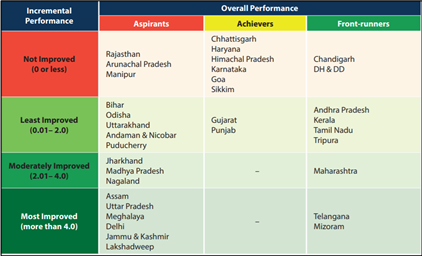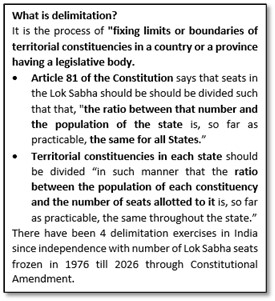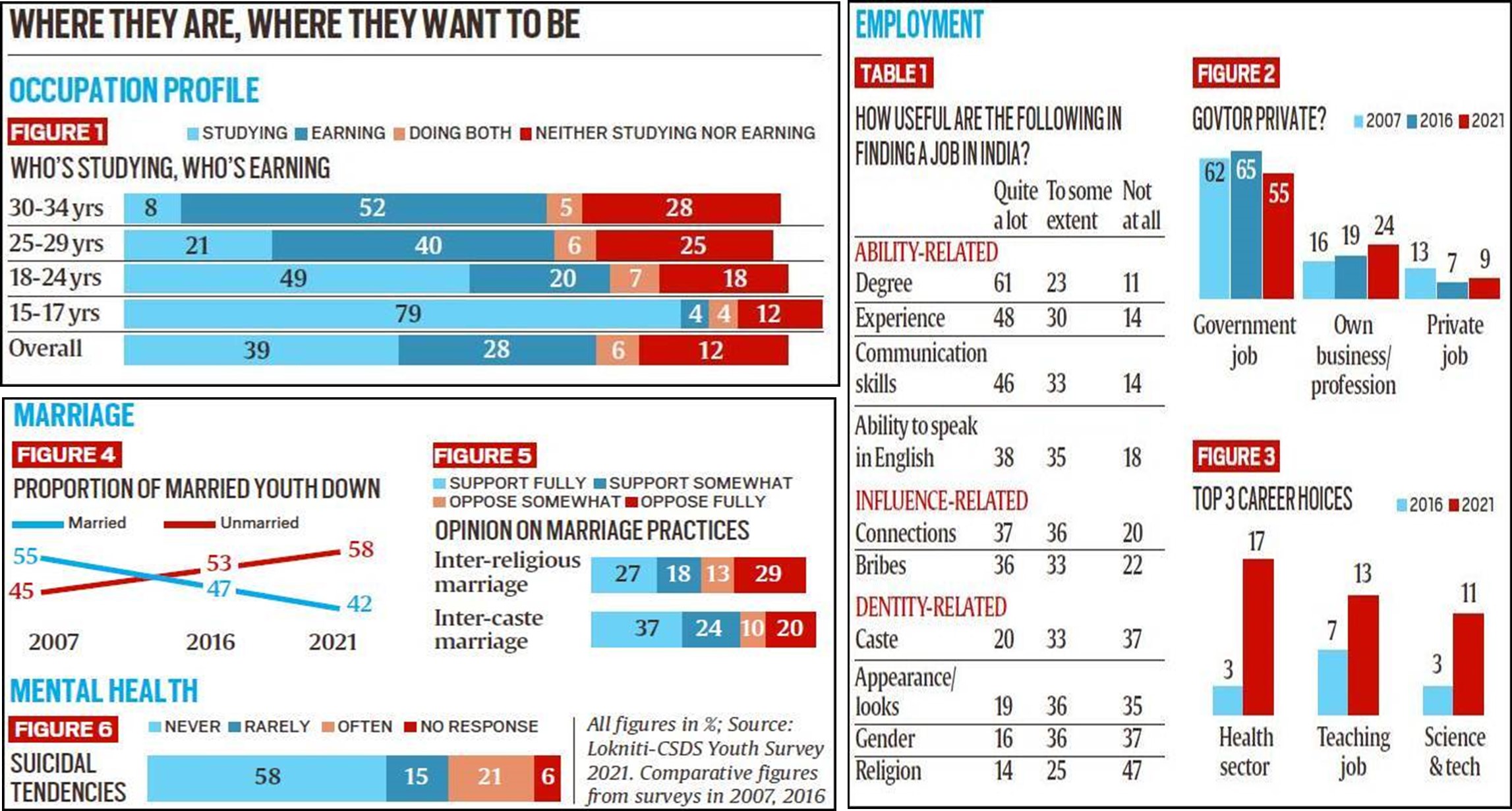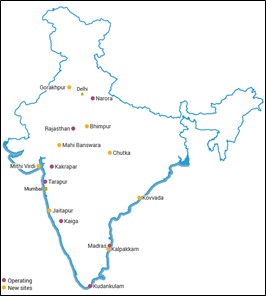Wednesday, 29th December 2021
FCRA Certificates
In News
Recently, the FCRA certificates of Missionaries of Charity was not renewed due to its audit irregularities.
About the News
- Ministry of Home Affairs has recently refused to renew the Foreigners Contribution Regulation Act (FCRA) registration of Missionaries of Charity (MoC) based on some adverse inputs against it.
- FCRA registration is mandatory for any NGO or association to receive foreign funds or donations.
What is the FCRA?
- First enacted in 1976 and later amended in 2010, FCRA regulates foreign donations and ensures that such contributions do not adversely affect internal security.
- MHA is the controlling authority of FCRA which conducts inspections and audits of NGOs
- It is applicable to all associations, groups and NGOs which intend to receive foreign donations.
- Foreign contributions can also be received with prior permission of MHA for carrying out specific activities or projects.
- Members of the legislature and political parties, government officials, public servants and judges and media persons are prohibited from receiving any foreign contribution.
- NGOs have to operate accounts in either nationalised or private banks which have core banking facilities to allow security agencies access on a real time basis.
- The registration of NGOs is initially valid for five years and it can be renewed subsequently on verification. Once cancelled the organisation is not eligible for registration or grant of ‘prior permission’ for three years from the date of cancellation.
- Filing of annual returns, on the lines of Income Tax, is compulsory.
- NGOs have to give an undertaking that the acceptance of foreign funds is not likely to prejudicially affect the sovereignty and integrity of India or impact friendly relations with any foreign state and does not disrupt communal harmony.
- Registered associations can receive foreign contribution for social, educational, religious, economic and cultural purposes.
What are the major issues with the present form of the Act?
- The latest amendment to the Act makes it mandatory for all NGOs to receive foreign funds through a single, designated bank account at the State Bank of India’s New Delhi branch.
- Aadhar is a mandatory identification document for all office bearers, directors and other key functionaries of an NGO.
- Cap on the administrative expenses at 20% of the total foreign funds received, earlier the upper limit was 50%.
- Bar on sub-granting by NGOs to smaller NGOs who work at the grass roots.
What are the major issues with the amendment?
- Impact on collaborative research in critical fields in India as organisations receiving foreign funds will no longer be able to transfer them to small NGOs working at the grassroots level.
- Livelihoods of workers associated with these small NGOs to be impacted due to caps on administrative expenses from 50% to 20% of the donations
- All the FCRA funds to come to just one bank – the State Bank of India in New Delhi would lead to centralisation.
- An absolute model of control over and above the rules, regulation and certification processes would stifle the spirit of cooperation and collaboration.
- Limited philanthropy will endanger the livelihoods of so many grassroots activists.
What can be done?
- Allowing collaborations to conduct research and finding solutions to wide-ranging public policy challenges.
- Regulated sub-granting to other organisations in India to build networks and conduct field research across institutions.
- Mechanism to identify NGOs which “cause mischief” in the country and misuse foreign funding from genuine NGOs.
- Creating an all-encompassing regulatory structure to create greater transparency and improved governance of FCRA recipient institutions.
- There is need to give more relaxations to NGOs especially in times of COVID-19 pandemic and lockdown.
Sources:
RBI’s annual trend and progress report
In News
The annual trend and progress report of RBI reveals nuanced picture of the banking sector during the pandemic.
Trends in the economy and banking sector
- Emerging from the Shadows of COVID-19:
- Pandemic-related lockdowns during 2020-21 resulted in decline in demand which led to a sharp decline in credit growth even as deposits increased.
- The fall in yields provided a silver lining, as banks booked profits on their trading accounts.
- Banking stocks were affected particularly adversely as markets priced in future asset quality deteriorated, affecting shareholders’ wealth and confidence.
- Yet, the pandemic’s impact on the economy would have been much sharper, had the Government and the Reserve Bank not stepped in with timely initiatives.
- Resolution of Stressed Assets:
- Banks’ bad debts have moderated while provision coverage ratios (PCRs), capital buffers as well as profitability indicators have improved relative to pre-pandemic levels.
- The new pre- pack resolution under IBC has considerably expedited and simplified the process up to admission in the National Company Law Tribunal (NCLT).
- Impact of Climate Change:
- The value of green bonds issued occupies the second spot in cumulative emerging market green bond issuance during 2012-2020.
- The RBI has begun participating in the workstreams of the Network for Greening of Financial System (NGFS), which will equip its staff with the necessary skills and knowledge on climate related risks.
- The Reserve Bank is actively engaged in conducting research on areas such as green finance and the impact of climate change on various macroeconomic variables such as inflation and growth.
- A ‘Sustainable Finance Group’ (SFG) was set up in the Reserve Bank in 2021 which coordinates with other national and international agencies on issues relating to climate change.
- India has reiterated its commitment to climate action at the United Nations Climate Change Conference (COP26) in November 2021 at Glasgow. Consequently, RBI has published a statement to support greening India’s financial system.
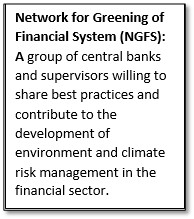
- Digital Lending:
- In the recent period, many digital platforms have emerged including those belonging to banks, NBFCs and many large multi-national corporations.
- Taking cognisance of the recent spurt in unfair digital lending practices, the Reserve Bank had constituted a Working Group on Digital Lending that has made recommendations to foster a safe digital lending ecosystem.
- State of Other Banks (other than scheduled commercial banks)
- The special mention accounts (SMA) category has swelled in NBFCs as the dispensations come to a close. Yet, aided by various policy initiatives, NBFCs have emerged stronger, with reasonable balance sheet growth, increased credit intermediation, higher capital and lower delinquency ratio.
- Small Finance Banks (SFBs), meanwhile, have shown structural problems as they suffer from concentration risk on both sides of their balance sheets. Therefore, SFBs need to diversify their assets as well as their liability profiles.
- The operational costs and investment needs of Payment Banks are higher than other segments of the banking sector due to stiff competition. Given the higher incidence of frauds and complaints about their operations, Payment Banks need to be vigilant on these fronts while addressing customer complaints efficiently.
- The co-operative banking sector in India emerged relatively unscathed from the first wave of the pandemic, although structural issues continue to mar the sector.
Way Forward:
The Indian financial sector is standing at crossroads, while the immediate impact of the fallout of COVID-19 will dominate the short-term, larger challenges relating to climate change and technological innovations will need a carefully crafted strategy. Most of the regulatory accommodations announced by the Reserve Bank have already expired. Further boost in the sector is required to increase credit growth, effectively reduce NPAs of SCBs further while putting a stop on the increase of the same for NBFCs and generate and sustain trust amongst customers about safety and security of the system while also nurturing innovation.
Sources:
Star rating for Garbage free cities
In News:
The Ministry of Housing and Urban Affairs (MOHUA) launched the Protocol for Star Rating of Garbage Free cities.
About the News
- The Star Rating Protocol was launched by the Ministry in 2018 to institutionalize a mechanism for cities to achieve Garbage Free status, and to motivate cities to achieve higher degrees of sustainable cleanliness.
- MOHUA announced the launch the ‘Azadi@75 Star Rating Protocol of Garbage Free Cities- Toolkit 2022' on “Good Governance Day”, 25th
- It is different from Swachh Survekshan as many cities can have the same high star rating simultaneously while in Swachh Survekshan only one city can be adjudged the “Cleanest city”.
- The aim is to make every urban local body at least 3-star Garbage Free as per the Star Rating protocol.
- In the recently concluded certification exercise for GFC, nearly 50% of ULBs (i.e., 2,238 cities) participated in the certification exercise, of which a total of 299 cities have been certified - 9 cities rated as 5-star, 143 cities rated as 3-star and 147 cities as 1-star.

Key Revisions of the Protocol
- The earlier 25 components/ indicators have now been reduced to 24, of which only 16 indicators are mandatory for 1-star and 3-star levels. The remaining 8 indicators are aspirational in nature, and will be relevant for 5-star and 7-star aspirants.
- The multi-step calculation of the previous GFC protocol has now been changed to a single step marking, which will help ULB to easily self-assess themselves for applying;
- The revised protocol is aligned with SBM-U 2.0 priorities, with higher weightages (50%) allotted to Door-to-Door Collection, Source Segregation, Waste processing & Dumpsite remediation;
- The entire process of applying for certification and subsequent assessment have been simplified and made completely digital, paperless; for example, digital declarations, geo-tagged waste-processing facilities, end-to-end digital monitoring of progress
- New components pertaining to IEC, capacity building, revenue from sale of waste by-products have been added to encourage cities to build an ecosystem to strengthen the waste management system.
- Continuous assessment throughout the year to help cities plan assessment.
Additional Features of the rating
- 7 star includes over-the-top aspirational criteria such as beautification & reduction in waste generated by the city.
- Six levels of ratings motivate cities to continuously work towards higher rating. Reverification of rating occurs after one year.
- The assessment & verification for 1, 2 and 4 Star are to be carried out by cities and states therefore based on trust.
- Citizens from different categories are to be involved through citizen declarations.
- City has to be certified as Open Defecation Free in order to apply for 3 Star and above rating.
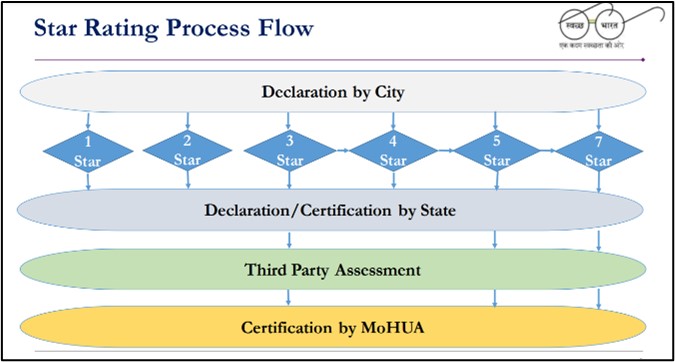
Sources:
Indira Devi Chaudhurani
On December 29, 1873 Indira Devi, daughter of Satyendranath Tagore and niece of Rabindranath Tagore, was a singer, writer, translator and activist was born. Indira Devi, popularly known as Bibidi, was born to Satyendranath Tagore and Jnanandanandinidevi. She published Bengali translations of Ruskin and of various French books, and published English translations of a number of Rabindranath’s poems, stories, and essays. Later on, she authored many papers on music, literature and women’s situation in India. She was trained in both Indian Classical and Western music from an early age. First, she studied at Auckland House in Simla and Loretta House in Calcutta; later she was one of the first women to do the BA examination of Calcutta University in 1892. Indira Devi won several awards: the Bhuvanmohini gold medal by Calcutta University in 1944, the Deshikottam by Visva-Bharati University in 1957 and the first Rabindra Award by the Rabindra Bharati Samiti in 1959. She was actively involved in women’s emancipation that included educational and welfare societies and widow’s homes.

Source:
The EdTech Industry in India
In News
The government has issued an advisory to parents regarding the use of caution against education technology (ed-tech) companies.
About the News
- With several allegations against a leading ed-tech company, the education ministry released an advisory for parents.
- It asked parents to avoid the automatic debit option for payment of subscription fee and also to read the terms and conditions carefully before making any move.
- Advertisement guidelines for ed-tech companies: The advertisement shall not state or lead the public to believe that an institution or course or program is official, recognized, authorized, accredited, approved, registered, affiliated, endorsed or has a legally defined situation unless the advertiser can substantiate with evidence.
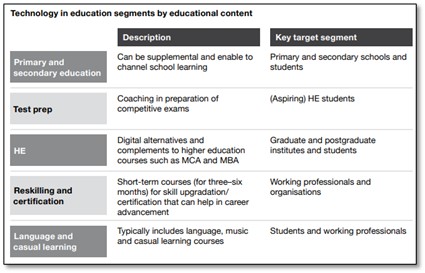
What is EdTech Sector?
- The Association for Educational Communications and Technology (AECT) defines EdTech as ‘the study and ethical practice of facilitating learning and improving performance by creating, using, and managing appropriate technological processes and resources.’
- The new National Education Policy (NEP), 2020, has put special emphasis on online and digital education. This will pave the way for EdTech to be increasingly integrated into India’s education system.
- Between January 2014 and September 2019, more than 4,450 EdTech startups were launched in India. EdTech is expected to grow at a compounded annual growth rate (CAGR) of approximately 30% to reach a market size of USD 10.4 billion by 2025.
Key Drivers of rise of EdTech industry
- Exponential growth of internet penetration in India: According to the Annual Status of Education Report (ASER) 2020, smartphone ownership among government school student families increased from 30% in 2018 to 56% in 2020, whereas smartphone ownership among private school student families rose from 50% to 74%.
- Government initiatives driving the Indian EdTech industry: The Indian EdTech industry is expected to be more policy friendly in the upcoming years due to rising government interest.(Refer Box)
- Technology Disruption: Adoption of advanced technologies such as artificial intelligence (AI), machine learning (ML), AR and VR will empower teachers with valuable tools and platforms to ensure effective in-class learning.
- Disposable income: An increase in consumer disposable income is likely to improve the willingness of customers, especially in quintile 5, to spend on academic activities and leisure courses.
- Local first approach: The key EdTech players embraced vernacular languages as well as taken into account regional disparities while implementing solutions. Though global in approach, this sector has been able to use both India’s demographic dividend to its advantage and leveraged the Indian consumers’ price elasticity for quality education.
Potential Benefits of the Edtech Sector
- Quality of Education:
- Customised learning for students from all walks: AI-enabled platforms can help in identifying knowledge gaps, understanding how students learn and tailoring online courses as per the most effective learning pathway for each student.
- Lifelong learning and professional development: India is expected to have a population of 140 million college-going people by 2030. A surge is expected in demand for learning new and advanced skills around digital, analytics, automation and cyber security from students and professionals across industries.
- Cost of Education: EdTech platforms have the potential to offer flexible learning models at different price points that are suited for a student’s socioeconomic background and specific needs.
- Contribution Economy: As per KPMG, online certification courses and test preparation will continue to account for a large proportion of the online education market in India which was estimated to touch the $1.96 billion mark in 2021.
- Employment Generation: "The sector witnessed larger demand in the backroom, especially for software developers, support function, teacher, content writer, marketing professionals. Experience bracket which is larger in demand is 3-5 years and 6-10 years," Yadav said.

Challenges associated with the EdTech industry
- Lack of Regulation: The lack of a regulatory framework in India could impinge on the privacy of students who now use educational technology (EdTech) apps for learning. Lack of regulation also leads to lack of real transparency and evidence available in the outcomes claimed by EdTech startups.
- Unethical Marketing Practices: Some ed-tech companies are luring parents in the garb of offering free services and getting the Electronic Fund Transfer (EFT) mandate signed or activating the auto-debit feature, especially targeting the vulnerable families.
- Socio-ethical Problems: Some critical areas of concern in social and ethical aspects are biased content delivery, implicit influence on career decisions, minimal historical data availability for efficient data modelling and machine learning leading to inaccurate profiling of students, increased unemployment of conventional educators, less upskilling and reskilling of educators and standardisation and moderation of content without regulatory approvals.
- Lack of credentials: With the working-age population in India making up for 54.1% of the total population, most jobs still demand an educational degree recognised by a designated board/authority. Since most EdTech players lack recognition from such designated authorities.
- Technology infrastructure: The technology stack and architecture of any EdTech interface is decided independently. There are multiple platforms built by the government and private players, but there is no integrated roadmap.
Way Forward
- National EdTech Policy: Given the amount of investment that the sector is attracting, and the potential to scale-up and measure educational outcomes for large sections of society, there is an urgent need for an EdTech policy so that the investment and effort being put by the private players and governments is in alignment with the long-term goals of the NEP 2020.
- Public-private partnership (PPP) model to bridge the digital divide: Appropriate EdTech infrastructure required to bridge India’s digital divide, like education television (edTV) and education radio (edRadio), tablets, and USBs pre-loaded with education content etc. can be developed with the help of PPPs.
- Regional content: The content being developed by EdTech startups is predominantly in English. NEP 2020 has again re-emphasised the need to create content in regional languages. A comprehensive content guideline can be used to create standardised and multilingual content.
- Open license: There are many EdTech platforms developed by public and private organisations, but technology and IP restrictions render them unsuitable for large-scale deployment. An open license enables educational institutes, nonprofits, and public institutions working at the grassroots to have access to standardised and cross-functional technology at low cost.
- Awareness among Stakeholders: There is a need to educate, inform and increase awareness of end-users of the risks and challenges associated with app-based learning. Educational institutions and government education departments should facilitate awareness campaigns, conduct regular auditing and performance reviews of these Edtech programmes.
Question: Critically analyse the role of Edtech sector in India’s Education System.
Sources:
- Government Issues Advisory Against Ed-Tech Companies: Here Are The Details
- INDIA TO BECOME THE EDTECH CAPITAL OF THE WORLD
- Reimagining the role of technology in education
- India urgently needs an EdTech policy
- Govt advisory on edtech firms: Is it moment of reckoning for sector?
- chase-india_-covid-19-and-edtech-report
- EdTech needs an ethics policy
- Data protection in EdTech is the need of the hour
Spiderman Chameleon
This is image of a chameleon a lizard that looks like popular Marvel superhero Spider-Man. This chameleon can be seen within the pink and blue colours of Spiderman’s swimsuit. This creature is the Mwanza flat-headed rock agama, often known as the Spider-Man agama. It climbs steep partitions identical to reel life spiderman. It is usually found in Tanzania, Rwanda, and Kenya. The head, neck and shoulders of the male Mwanza Flat-headed Rock Agama is either a bright violet or red, while the rest of their bodies are a deep blue colour. The female is mostly brown.

Source:
YUVA scheme
- Context: The Prime Minister has recently announced the ‘Young, Upcoming and Versatile Authors’ (YUVA) scheme.
- YUVA is a mentorship programme to train young authors.
- The scheme is aimed at training 75 aspiring writers below 30 years, who are ready to express themselves and project India and its culture and literature globally.
- A scholarship of Rs 50,000 per month for a period of six months per author will be paid under the mentorship scheme.
- Through this scheme, the government aims to bring reading and authorship as a preferred profession at par with other job options and to impart a positive psychological push to the young minds amidst the impact of the pandemic on the mental health of children.
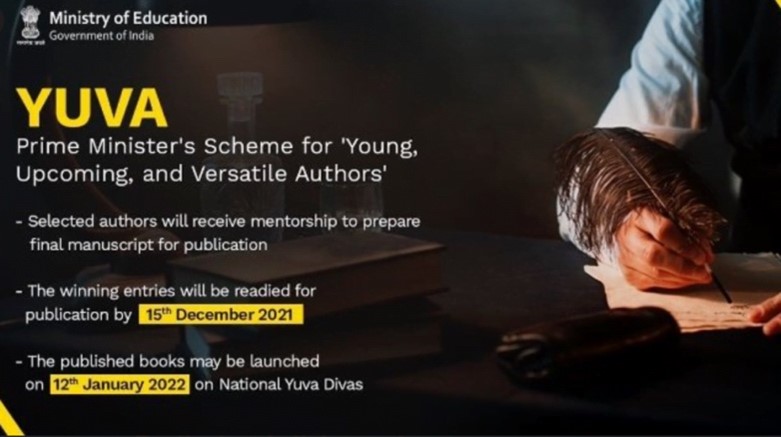
Source:
- PM Modi unveils YUVA scheme for young writers, offers stipend of Rs 50,000; details here
- PM-YUVA Mentorship Scheme: National Book Trust Announces 75 Selected Authors
Image Source:
Mission Sagar
- Context: INS Kesari has delivered 500 tonnes of food aid to Mozambique under Mission Sagar.
- It is a mission that was launched in 2020 to deliver COVID-19 related assistance to the countries in the Indian Ocean Region.
- Mission SAGAR is a major milestone in India’s engagement with the countries in the Indian Ocean Region, in line with ‘SAGAR (Security and Growth for All in the Region)’.
- It is in line with India’s role as the first responder in the region and builds on the excellent relations existing between these countries to battle the COVID-19 pandemic.
- Under the Sagar Mission, the Indian Navy has delivered assistance of more than 3,000 metric tons of food aid, 300 metric tons of liquid medical oxygen, 900 oxygen concentrators and 20 ISO containers to 15 friendly foreign countries over 215 days at sea.
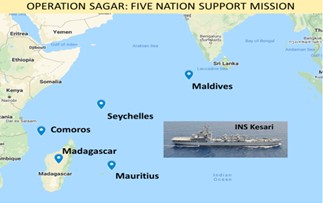
Source:
- Under Mission Sagar, INS Kesari delivers 500 tonnes of food aid to Mozambique
- INS Kesari sets sail on Covid aid mission to Indian Ocean countries
Image Source:
Kaavi Art
- Context: The Prime Minister had recently spoken about the dying Kaavi art form.
- Kaavi is a form of wall art done in bright red and white shades and found in the Konkan region, especially in temples of Goa, Maharashtra and Karnataka.
- Kaavi gets its name from kaav, a red pigment found in laterite soil that is used to create the vibrant images on the snow white background of the plaster.
- It was introduced by the Portuguese who ruled Goa until 1961.
- It is done on wet plaster in a manner similar to frescoes. The plaster is obtained from burning seashells in a pit which is mixed with washed sand from river beds and jaggery.
- This mixture is allowed to ferment for a couple of weeks and then slaked with water and applied to the wall.
- The plaster is cured every four hours with water and once the plaster hardens a steel bodkin is used to cut out the design.
- Red is the only colour used in kaavi art and is found on walls of temples and homes that depicts the ancient history of India.

Source:
- PM Modi talks about 'Kaavi' on Mann Ki Baat, stresses ancient art’s preservation
- Kaavi Art: Goa’s Gift to the World
Image Source:
Soya Meal
- Context: The Centre recently imposed stock holding limits on soya meal, till June 2022 to curb hoarding as well as check price rise.
- Soya meal is the most important protein source used as a raw material in the poultry feed industry.
- It is the by-product of the extraction of soybean oil.
- As per the recently imposed stock holding limits,
- Soya meal processors, millers and plant owners can hold a maximum stock of 90 days production and they are required to declare the storage location.
- Government-registered trading companies, traders and private chaupals can hold a maximum stock of 160 tonne with a defined and declared storage location.
- If stocks held by legal entities are higher than the prescribed limits, then they have to declare the same on the food ministry's portal and bring it to the prescribed stock limits within 30 days of the issue of the notification.
- The soya meal stock should be regularly declared and updated on the portal and the data on the portal will be regularly monitored by the Department of Animal Husbandry and Dairying.

Source:
- Centre imposes stock limits on soya meal till June 2022 to check price rise
- Stock Limits Imposed On Soyameal Till June 2022 To Check Price Rise
- Soybean meal
Image Source:
Why online gaming in India needs regulation: IE
Essence: The article talks about the types of online gaming in India and absence of regulations for this industry. Due to lack of regulations, large number of people are developing addiction as well as dependence on online gaming. This leads to career disruptions and devastation of families. But at the same time a well-regulated gaming industry provides compelling advantages too, like the potential to generate revenues and employment.
To reap these benefits we need to have system of checks and balances to prevent youth from becoming pathological gamers. A Gaming Authority at the center along with strengthening the KYC norms along with OTP verification on Aadhar could potentially resolve this issue. Along with that a mechanism to educate users about potential risk and a robust grievance handling mechanism will help industry go a long way.
Why you should read this article?
- To understand the types of online gaming.
- To understand the how lack of regulatory oversight in the gaming arenas are leading to devastating effects for youth.
- To understand the benefits that the industry could reap for the economy.
- To understand the regulations that should be there to regulate the industry.
Why online gaming in India needs regulation
Source:
Iran N-deal: A road map before time runs out: HT
Essence: The editorial points out at contentions in the nuclear deal between the parties involved in the Joint Comprehensive Plan of Action (JCPOA). Iran had earlier followed all the designated terms of the nuclear deal, initiated in 2016 and affirmed by IAEA. But following the election of Donald Trump as the President of USA, USA withdrew from the deal, re-imposed sanctions and called for stricter terms to rejoin the JCPOA. The new demands from USA were beyond nuclear proliferation and possibly vague terms.
This has been considered a mistake on the part of USA because Iran wouldn’t agree to such terms. Secondly, it could lead to a new nuclear race in West Asia, increasing the volatility and instability amongst the competing countries.
Presently Iran has a sizeable quantity of enriched uranium- 20% and 60%, both. And it could choose to stop continuing further enrichment, provided the global powers understand the adjustments to be made and stakes for participants.
Why you should read this article?
- To understand the various non-nuclear conditions imposed by USA on Iran to re-enter into nuclear agreement.
- To know the stakes of Iran and other West Asian countries in case of nuclear proliferation.
Source:
Our expanding gig economy must treat workers fairly: LM
Essence: "Economic activity including the utilisation of temporary or independent employees to execute activities primarily in the service sector" is what the gig economy refers to. While this business model appears to be promising, it is riddled with issues for platforms that are more behavioural than legal in nature. The recent policy changes have once again highlighted the “unfair labour practices” which allegedly affect the capacity of Gig workers to earn. The article goes on to recommend a strategy for dealing with the problem more effectively. According to several assessments, India’s gig economy has the capacity to maintain up to 90 million employments in the non-farm economy alone, while also contributing 1.25 percent to GDP. Hence, to capture the full benefits of the gig economy, Indian enterprises like UC must first comprehend the long-term behavioural aspects of exploitative work relationships, as well as the legal implications.
Why should you read this article?
- To comprehend the significance of the gig economy and the difficulties associated with it.
- To comprehend the potential of the gig economy in India's GDP; and to comprehend feasible solutions to the problem.
Source:
Skill development in rural Gujarat
Background
- According to the recent National Crime Records Bureau (NCRB) report ‘Accidental Death and Suicides in India’, many people ended their lives citing ‘Unemployment and Distress’ as the reason.
- The Government of Gujarat established the Commissionerate of Employment and Training (CET) under Kaushal Vikas Kendra to facilitate vocational training and other skill development programs, which are responsive to the industry needs.
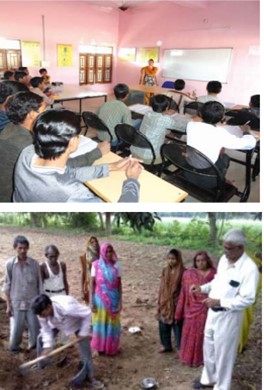
How did the Kaushal Vikas Kendra work out Rural Gujarat?
- Awareness: Massive awareness campaigns were launched to advertise the program in rural as well as urban.
- Rural Implementation: Meetings are held at local schools, panchayat, street plays and information boards are installed.
- Targeting weaker sections: KVK coordinator informs women and their families on the advantages of vocational education, which allows women to participate in the training without disrupting their household responsibilities.
- The courses at KVK were free for Women, SC/ ST, physically handicapped, trainees below poverty line and even senior citizens.
- Output: The trainees received a formal certificate from Gujarat Government Council of Vocational Training. Flexible admission criteria allowed people from different segments of the population to rise up from poverty.
Quote: “A gap in skills and abilities reveal a golden opportunity!”- Ratan Tata
Source:
Share the article
Get Latest Updates on Offers, Event dates, and free Mentorship sessions.

Get in touch with our Expert Academic Counsellors 👋
FAQs
UPSC Daily Current Affairs focuses on learning current events on a daily basis. An aspirant needs to study regular and updated information about current events, news, and relevant topics that are important for UPSC aspirants. It covers national and international affairs, government policies, socio-economic issues, science and technology advancements, and more.
UPSC Daily Current Affairs provides aspirants with a concise and comprehensive overview of the latest happenings and developments across various fields. It helps aspirants stay updated with current affairs and provides them with valuable insights and analysis, which are essential for answering questions in the UPSC examinations. It enhances their knowledge, analytical skills, and ability to connect current affairs with the UPSC syllabus.
UPSC Daily Current Affairs covers a wide range of topics, including politics, economics, science and technology, environment, social issues, governance, international relations, and more. It offers news summaries, in-depth analyses, editorials, opinion pieces, and relevant study materials. It also provides practice questions and quizzes to help aspirants test their understanding of current affairs.
Edukemy's UPSC Daily Current Affairs can be accessed through:
- UPSC Daily Current Affairs can be accessed through Current Affairs tab at the top of the Main Page of Edukemy.
- Edukemy Mobile app: The Daily Current Affairs can also be access through Edukemy Mobile App.
- Social media: Follow Edukemy’s official social media accounts or pages that provide UPSC Daily Current Affairs updates, including Facebook, Twitter, or Telegram channels.

